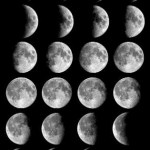charon
"It is not when truth is dirty, but when it is shallow, that the lover of knowledge is reluctant to step into its waters." -Friedrich Nietzsche
Although the innermost planets, from Mercury through Saturn, were known since ancient times, it's only since the advent of the telescope that we've discovered what really lives in our Solar System. Over the past four centuries, the wonders of not only the distant Universe, but also our nearby neighborhood, have been uncovered in spectacular detail.
Image credit: NASA and – I believe – G. Bacon (STScI).
The third and fourth largest planets were…
Sure, astronomers might not call it a planet anymore, but every schoolchild knows how badass Pluto really is. It's got a giant moon, Charon, and two smaller ones, Hydra and Nix.
In addition to being colder than ice with an average temperature of 44 Kelvin (that's colder than liquid nitrogen), I'm here to bring you the news that despite the fact that it's so cold and so far from the Sun, Pluto has been melting!
Since its discovery by Clyde Tombaugh in 1930, astronomers have been fascinated with Pluto, making very careful observations of it, trying to learn more about this bizarre, icy sphere…
And if the band you're in starts playing different tunes
I'll see you on the dark side of the Moon.
One of my favorite readers, Zrinka, asks us why we're only able to see one side of the Moon from Earth. Seriously, look at the different phases; we always see the same side of the Moon:
How does this happen? Well, the Moon makes one revolution around the Earth about every 29 days, and that's what causes the Moon phases. But the Moon also rotates once every 29 days also. Because of this, the same side of the Moon always faces the Earth:
We call this "being locked." We're not the only system…


